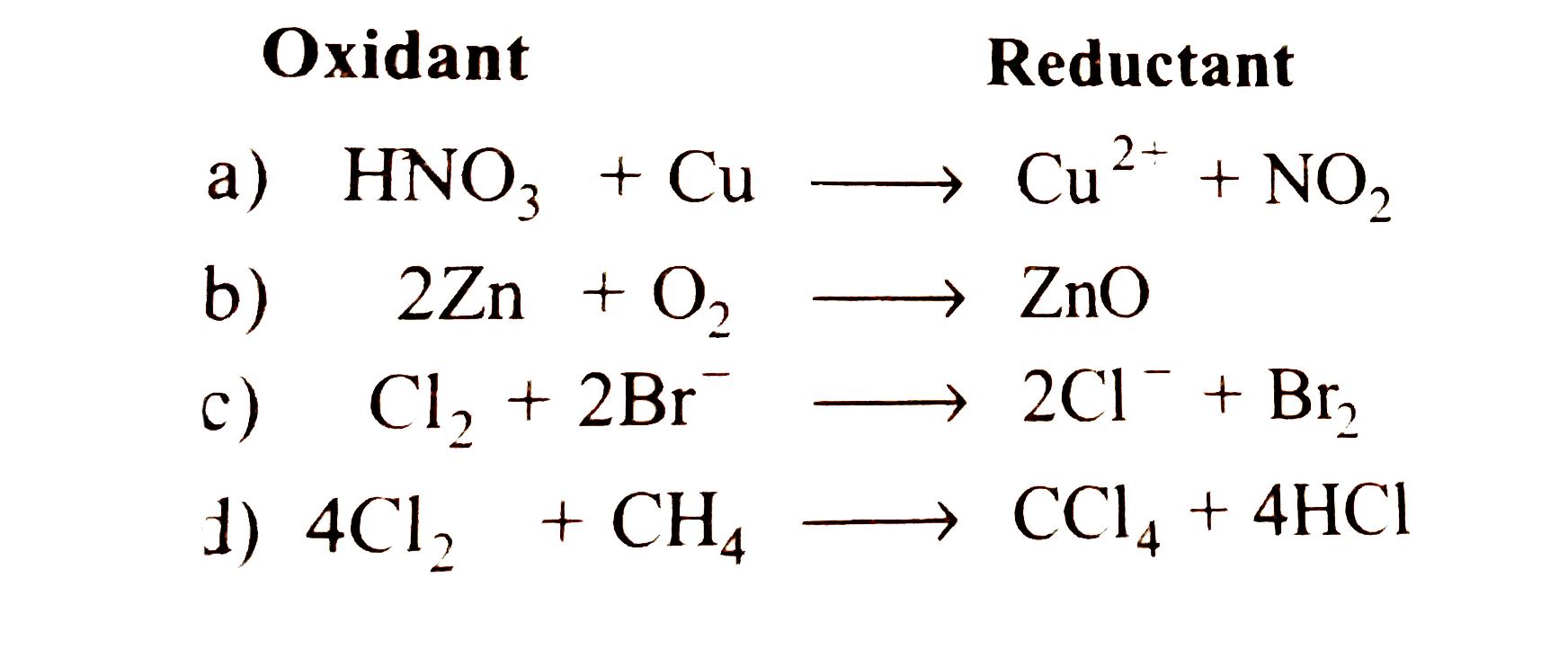Reduction involves (A) Loss of electrons (B) Gain of electrons (C) Increase in the valency of positive part (D) Decrease in the valency of negative part
Step by step video & image solution for Reduction involves (A) Loss of electrons (B) Gain of electrons (C) Increase in the valency of positive part (D) Decrease in the valency of negative part by Chemistry experts to help you in doubts & scoring excellent marks in Class 12 exams.
Similar Questions
The number of valence electrons increases down a group of the periodic table.
View SolutionOxidation reaction involves loss of electrons, and reduction reaction involves gain of electrons. The reaction in which a species disproportinates into two oxidation states ( lower and higher) is called disproportionation reaction.
Which of the following statements is wrong?View Solution
Knowledge Check
- Question 1 - Select One
Total number of electron present in the valence shell of C aton in methyl radical is
A6B7C8D5 - Question 2 - Select One
Oxidation reaction involves loss of electrons, and reduction reaction involves gain of electrons. The reaction in which a species disproportinates into two oxidation states ( lower and higher) is called disproportionation reaction.
Which of the following is not a dispropotional reaction?AөOH+Br2→Brө+BrOө3BCu2O+2H⊕→Cu+Cu2++H2OC(CN)ө→CO2−3+NOө3D(CN)2+2өOH→CNө+CNOө+H2O - Question 3 - Select One
Oxidation reaction involves loss of electrons, and reduction reaction involves gain of electrons. The reaction in which a species disproportinates into two oxidation states ( lower and higher) is called disproportionation reaction.
Which of the following statements is wrong?AAn acidified K2Cr2O7 paper on being exposed to SO2 turns green.BMercuric chloride and stannous chloride cannot exist as such.CIron turning on addition to CuSO4 solution decolourises the blue colour.D[CuI4]2− is formed but [CuCl4]2− is not.
Oxidation reaction involves loss of electrons, and reduction reaction involves gain of electrons. The reaction in which a species disproportinates into two oxidation states ( lower and higher) is called disproportionation reaction.
Which of the following statements is correct?View SolutionOxidation reaction involves loss of electrons, and reduction reaction involves gain of electrons. The reaction in which a species disproportinates into two oxidation states ( lower and higher) is called disproportionation reaction.
Which of the following statements is wrong?View SolutionOxidation and reduction process involves the transaction of electrons. Loss of electrons is oxidation and the gain of electrons is reduction. It is thus obvious that in a redox reaction, the oxidant is reduced by accepting the electrons and the reductant is oxidised by losing electrons. The reactions in which a species disproportionates into two oxidation states (lower and higher) are called disproportionation reactions. In electrochemical cells, redox reaction is involved, i.e., oxidation takes place at anode and reduction at cathode.
Select the correct statement:View SolutionOxidation and reduction process involves the transaction of electrons. Loss of electrons is oxidation and the gain of electrons is reduction. It is thus obvious that in a redox reaction, the oxidant is reduced by accepting the electrons and the reductant is oxidised by losing electrons. The reactions in which a species disproportionates into two oxidation states (lower and higher) are called disproportionation reactions. In electrochemical cells, redox reaction is involved, i.e., oxidation takes place at anode and reduction at cathode.
Which of the following reactions is/are correctly indicated?
 View Solution
View SolutionOxidation and reduction process involves the transaction of electrons. Loss of electrons is oxidation and the gain of electrons is reduction. It is thus obvious that in a redox reaction, the oxidant is reduced by accepting the electrons and the reductant is oxidised by losing electrons. The reactions in which a species disproportionates into two oxidation states (lower and higher) are called disproportionation reactions. In electrochemical cells, redox reaction is involved, i.e., oxidation takes place at anode and reduction at cathode.
The reaction Cl2→Cl−+ClO−3 is:View Solution
